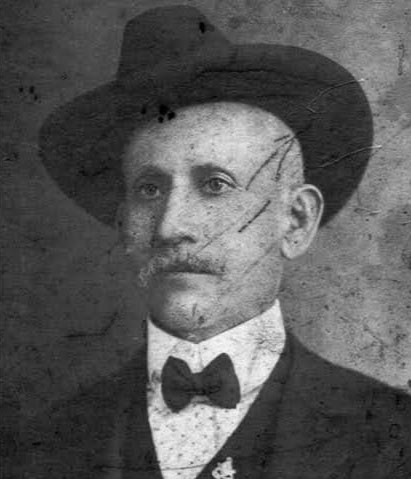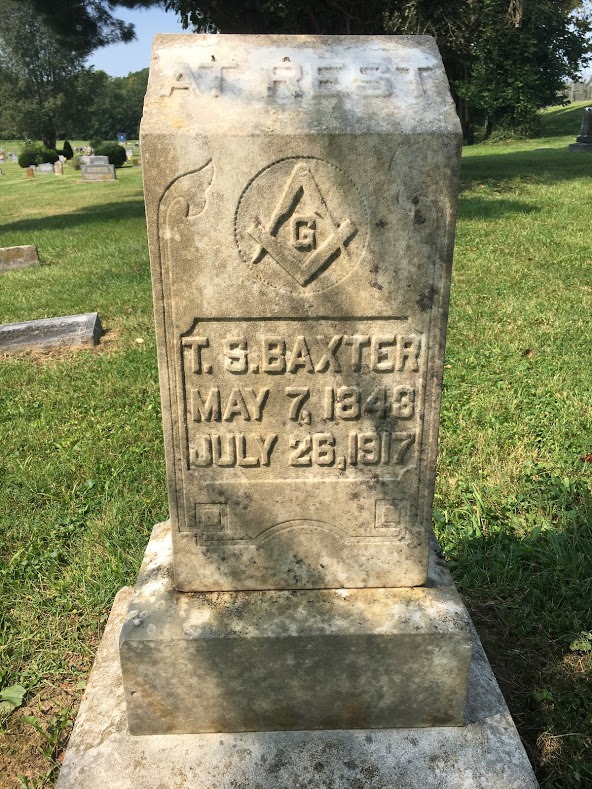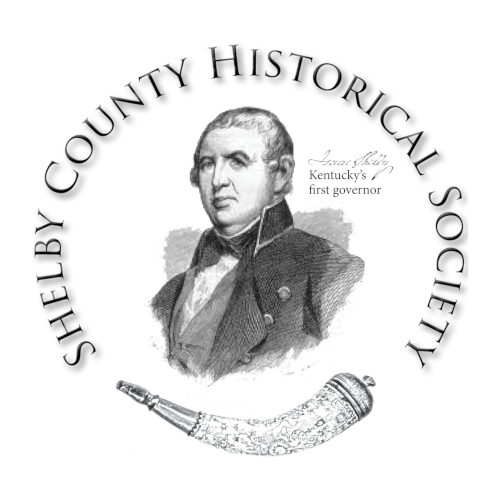

T.S. Baxter
First African American City Councilman in Shelbyville
Thomas Samuel Baxter was most likely born into slavery in 1843, as he did not appear in a Census record until he was twenty-seven years old. In the 1850 U.S. Census Slave Schedules, there were several slaveholders named Thomas Baxter throughout Kentucky. One Thos. C. Baxter in Fayette County owned thirty-three slaves, four of which were seven-year-old boys, the same age our T.S. Baxter would have been in 1850. Masters often fathered children with their slave women, and their offspring were frequently named after them. The names of Thomas’ parentage on his death certificate are listed as “Not Known”. With his light skin and sharp features, it is reasonable to believe that he had one Caucasian parent. He was listed in two Census records as black, and in two as mulatto.
T.S. Baxter had many careers. Self-educated, Baxter came to Shelby County after the Civil War as a Teacher in at least one of Shelbyville’s three Freedmen’s Bureau schools. By 1880, he was living on Clay Street and working as an Editor. He appeared in the 1883 Louisville City Directory as the President of the Ohio Falls Express, and African American publication. Residence: Shelbyville. In the 1900 U.S. Census, T.S. Baxter was listed as a Day Laborer, and it also shows that after thirty-one years of marriage, his wife Elizabeth had borne nine children, with only four surviving. By 1910, Thomas was employed by a distillery as a Storekeeper. Upon Thomas’ death in 1917, his death record shows he was an Advertiser for Local Merchants.
Thomas also participated in several associations and had many interests. In 1877, Baxter was elected Grand Master of the Benevolent Order of the United Brothers of Friendship. He served four terms and organized numerous lodges and temples in Kentucky and Tennessee. He also served as Treasurer and Grand Secretary during his tenure. Under the leadership of T.S. Baxter in 1891, the Grand Lodge announced the decision to, “Donate $5,000 in order to secure the erection of the proposed National Orphans Home to the State.” He was a member of the Kentucky State Bill Posters’ Association, a prominent member of Saint John’s United Methodist Church in Martinsville, and “bass drummer in local colored bands for over a third of a century”. Baxter was selected as a Delegate to the KY State Republican Convention, and a Candidate for Delegate to the Chicago Republican Convention.In 1892, Thomas Baxter became the first African American to serve on Shelbyville’s Board of Council. He led our community, representing the sixth ward for eighteen years, until he was gerrymandered out of office. The wards were redistricted so that the sixth was absorbed into the fourth and fifth, and a new sixth ward was created. Since Baxter and his family resided at 1121 Equity Street at the time, he no longer lived in the sixth ward and was therefore ineligible to serve on the Council. He was replaced by C.P. Hall, owner of Hall & Son Lumber Company (later Hall & Davis) in 1910.
On January 21, 1910, the Shelby Record published an extremely prejudiced article titled, “Good Bye Baxter”, regarding the end of Thomas’ service on the Council. Some excerpts include, “As more than 98 1/2 percent of the property of Shelbyville is owned by white taxpayers, a large majority of them believed that their affairs should be in the hands of reputable white me exclusively. Its is not a matter of politics at all. Simply a question of Shelbyville’s Board of Council being composed of white men. Should the Republicans elect a respectable white man he will serve the same as the rest, but the colored brother’s day, as a City Father, has passed.” And regarding the gerrymandering: “It was easy enough and the wonder is that the idea had not suggested itself sooner.”
T.S. Baxter passed away on July 26, 1917, of arteriosclerosis, complicated by chronic nephritis. He had been confined to his home for several years. His obituaries in two local papers described him as, “a power among his race in Republican politics” and, “at one time one of the best known negroes in the State.” His body was released to Saffell & Saffell, and he was interred at Calvary Cemetery on Seventh Street.

